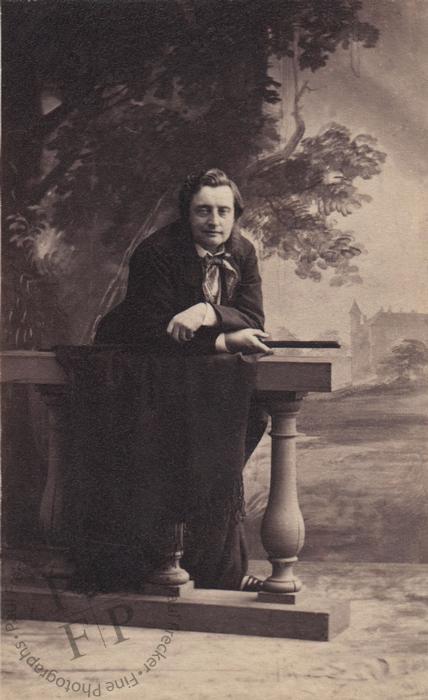John Francis Campbell of Islay
(1822-1885)
Volume 1, page 160, sitting number 845.
Born in Edinburgh on 29 December 1822, John Francis Campbell was a cousin of George, 8th Duke of Argyll. He was brought up on his family's estate on Islay and educated at Eton and the University of Edinburgh, where he studied the sciences and natural history, but graduated in law in 1851. With his father Walter Frederick Campbell deeply in debt and forced to sell his estates, the young Campbell moved to London to practice as a barrister, although he much preferred science. He gained the position of Private Secretary to his cousin the Duke, and was appointed Secretary to a succession of Royal Commissions, on Heating and Ventilation, on Lighthouses and on Coal. He also served Queen Victoria as Groom of the Privy Chamber (1860-74) and Groom in Waiting (1874-80).
Campbell is perhaps best known as a collector of Gaelic folklore, systematically recording the Gaelic oral tradition principally in the West Highlands and Islands. Between 1849 and 1873 he travelled in Scandinavia and Northern Russia, recording the landscapes and customs of the countries he visited in his lively and detailed journals. He also visited North America (1864) and the Far East and India (1874-5). He made contributions in the fields of geology, geomorphology and photography, as well as inventing a practical sunshine recorder (1853), later improved by Sir George Stokes and today known as the Campbell-Stokes Sunshine Recorder.
His works include Frost and Fire (1865) explaining the action of volcanoes and glaciers, and Popular Tales of the West Highlands (in four volumes, 1860-62). His journals and manuscripts, including many beautiful watercolours and early photographs of the places and peoples he visited, are held by the National Library of Scotland.
John Francis Campbell died at Cannes on 17 February 1885. According to the Times (Friday 24 April 1885) the value of his personal estate amounted to over £52,000. ‘The testator gives certain books and manuscripts relating to Celtic and other matters to the Advocates’ Library, Edinburgh, on condition that they are kept together and made available for the use of Gaelic scholars and others; all his real leasehold and heritable estate, except Niddry Lodge and his freehold property at Chale, Isle of Wight, to his half-brother, Walter Douglas Somerset Campbell; and some annuities and legacies. The residue of his real and personal estate is to be held, upon trust, for his stepmother, Mrs Katherine Isabella Campbell, for life; at her death he leaves the pictures, prints and busts at Niddry Lodge, including two statues lent by the Earl Granville, to the Duke of Argyll, or in the case of his previous death to his heir in possession of Inveraray Castle, as it is his wish that these family relics should go back to the county from which they came and be in the possession of “my chief or his successors.” As to the ultimate residue of his property, two-sixths are to go to his said half-brother, and one-sixth to each of his four half-sisters.’
[From an album compiled either by the Campbells of Ardpatrick, or possibly by the Campbells of Islay themselves.]

